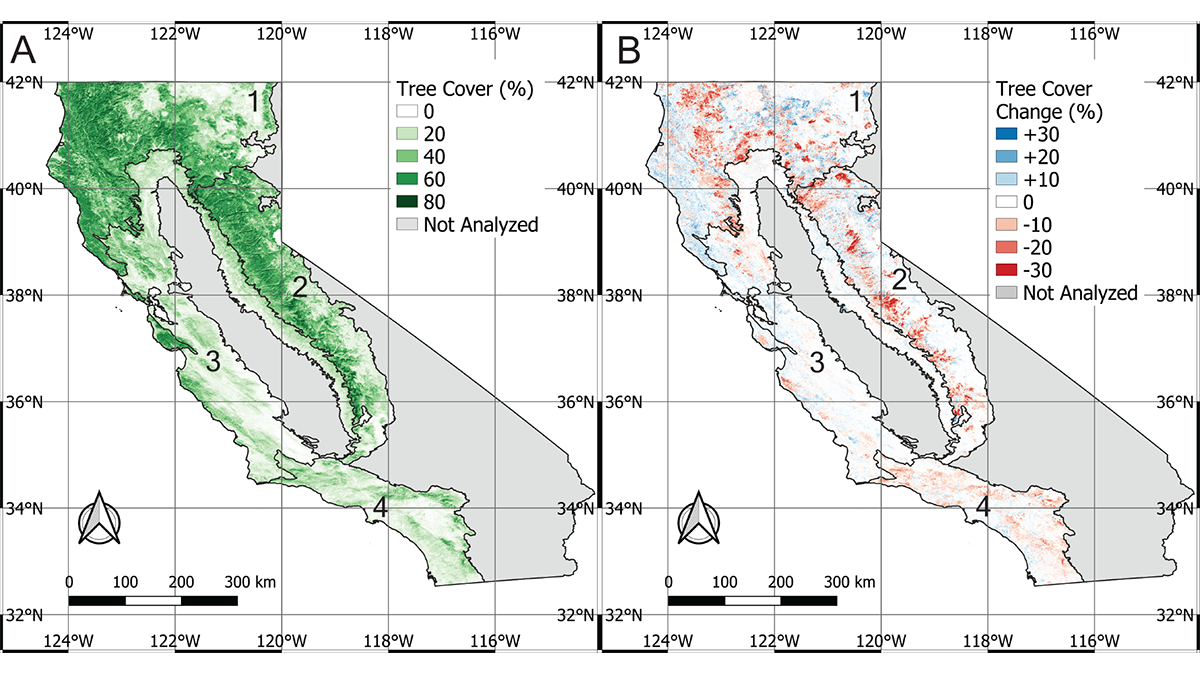Source: AGU Advances
Editors’ Highlights are summaries of recent papers by AGU’s journal editors.
Natural climate solutions (NCS), the uptake of carbon from the atmosphere by ecological processes to mitigate climate change, are a topic of intense interest. They are, for the most part, “no regrets” solutions that have additional benefits, particularly when ecosystem’s natural biodiversity and function is protected. NCS depend on the health and stability of ecosystem carbon stores, and these are globally under threat from a combination of land use and climate change. The tropics, which have long been a sink with uptake more than balancing deforestation sources, may be transitioning to becoming a net source. Similarly, a growing literature shows warmer and drier conditions reduce soil carbon storage, all factors putting NCS in ecosystems at risk. Wang et al. [2022] show a dramatic case study using historical remote sensing and inventory data. The State of California has ambitious plans for NCS (https://resources.ca.gov/Initiatives/Expanding-Nature-Based-Solutions) but Wang et al. [2022] show that patterns of land use, drought and wildfire put these plans at risk. The team demonstrates that California lost ~7% of its forest cover with losses due to fire exceeding gains and more than balancing regrowth after fire. Losses were higher in the warmer regions of the state, and gains more frequent in the cooler regions, suggesting that continued warming will put additional regions at increased risk. The results show the fast out (dieback and fire) and slow in (forest reestablishment and growth) dynamics characteristic of the land carbon cycle. California provides a cautionary tale of risks to NCS, as well as highlighting opportunities for management to mitigate these risks.
Citation: Wang, J., Randerson, J., Goulden, M., Knight, C. & Battles, J. Losses of tree cover in California driven by increasing fire disturbance and climate stress. AGU Advances, 3, e2021AV000654. https://doi.org/10.1029/2021AV000654
—David Schimel, Editor, AGU Advances

